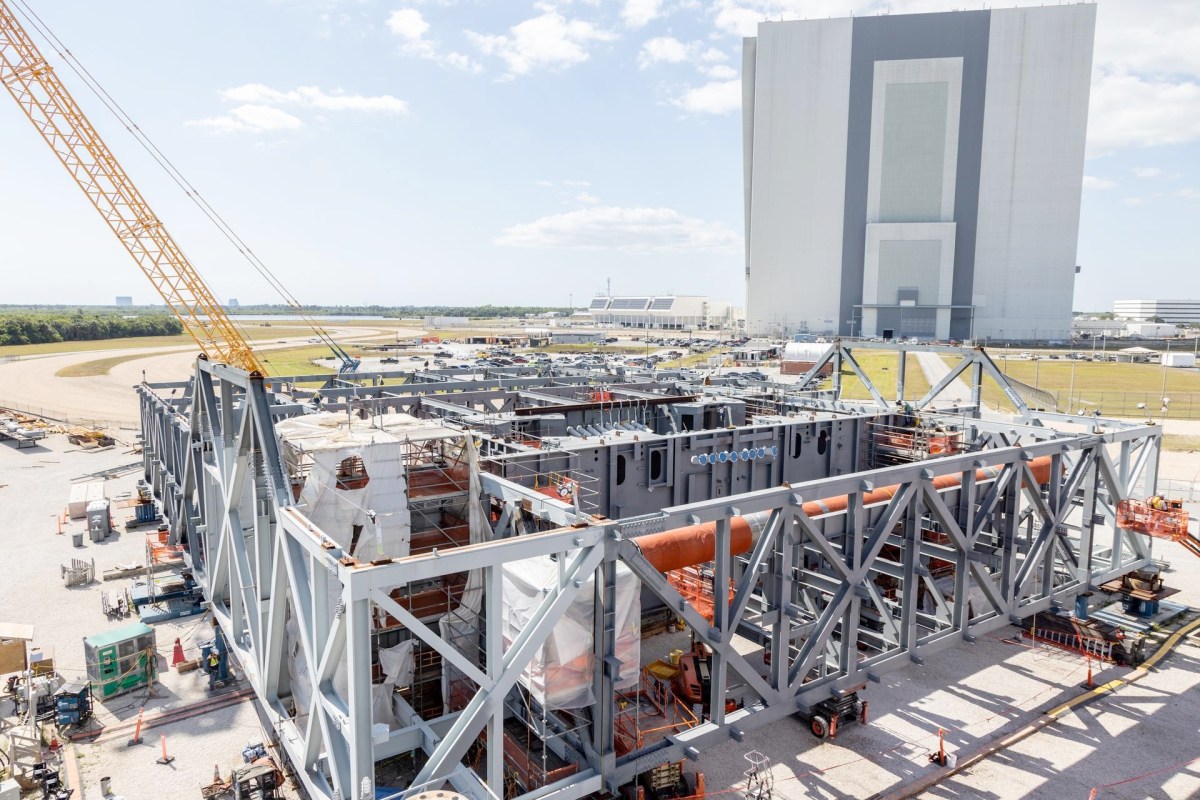On Aug. 27, NASA’s Office of Inspector General (OIG) released an audit of Mobile Launcher 2, the mobile launch platform the agency is building for the Block 1B version of the Space Launch System. ML-2, originally projected to cost $500 million, now has a formal cost estimate of $1.8 billion, the audit revealed, adding that the cost could grow to as much as $2.7 billion. The platform was also in danger of not being ready in time to support the scheduled late 2028 launch of Artemis 4.
One might expect the audit to come up two days later at a meeting of the NASA Advisory Council’s human exploration and operations committee, given the long-running concerns about the ML-2 project. Instead, NASA officials and committee members focused not on the auditors’ report but on the auditors themselves.
“We have a number of audits, and it takes, I would say, a significant amount of our resources,” said Cathy Koerner, NASA associate administrator for exploration systems development, at the meeting.
Resource drainShe said that because of the “resource drain” caused by those audits, her directorate has been keeping track of the hours personnel have spent supporting them. One audit, she estimated, took about 1,100 hours.
This is not the first time her office has brought up this issue. In the formal responses to recent OIG audits, which OIG includes in its public reports, Koerner has spelled out the number of hours, reports, meetings and other products her directorate has provided. By contrast, the response by NASA’s Science Mission Directorate to another recent OIG audit on the Roman Space Telescope made no mention of hours spent or meetings attended.
Growing tensions with the inspector generalThose responses also revealed an increasingly antagonistic relationship between the exploration directorate and the inspector general. In the ML-2 audit, the directorate rejected the $2.7 billion cost projection and argued that “the extended duration and pace of the audit created challenges and resulted in a misrepresented performance profile.”
In a report in May auditing preparations for Artemis 2, the directorate suggested that OIG was overstepping its bounds by commenting on engineering issues, which it claimed created conflicts of interest and could “compromise the integrity of existing safety processes.”
The committee was sympathetic to Koerner’s concerns. Later in the meeting, they started drafting a recommendation that the NASA administrator “seek relief from the burden of multiple external audits” by asking the White House and Congress to limit such audits unless required by law.
“We all absolutely agree with and, quite frankly, support independent assessments,” said one committee member, Kwatsi Alibaruho, “but the level of audits that have been requested have now grown to the point where it’s becoming a significant portion of the team’s overall work.
Another committee member, Paul McConnaughey, was worried that when OIG or the Government Accountability Office (GAO) releases audits, “the press takes that and sensationalizes it, and inappropriately so.
It’s easy to understand why NASA would be frustrated with the workload imposed by audits that can distract from the task at hand. And, if those audits found that the programs were in good shape, they might have a point.
But as OIG and GAO audits have shown, many of those programs have cost, schedule and other problems that would not have come to light as soon or in as much detail without those audits. For example, the OIG audit report on Artemis 2 was the first time the public saw images of the damaged heat shield from the Artemis 1 Orion spacecraft that was a factor in delaying Artemis 2; the cause of that damage is still not fully understood.
“Sorry, the only way to reduce audits is to increase transparency and improve management and oversight,” said Cristina Chaplain, a former GAO analyst who audited NASA programs, on social media. “Even then, it is Congress’ responsibility to know what is going on with taxpayer investments.
There may be ways to streamline the auditing process to lessen the burden on NASA programs, but given the problems many of those programs are facing, audits remain essential in helping the agency and the public know what’s going on with them.
This article first appeared in the September 2024 issue of SpaceNews Magazine.
